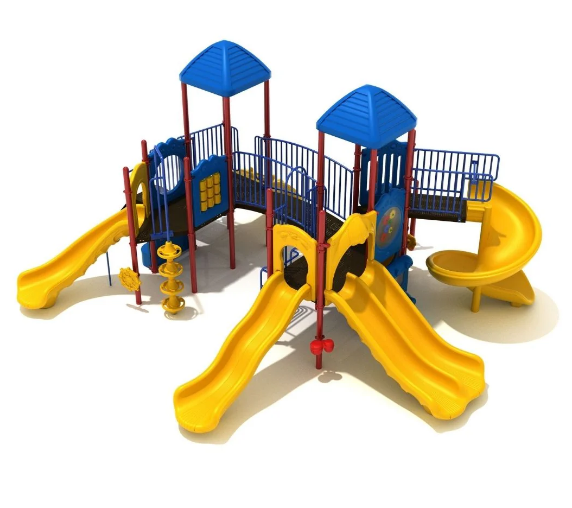Inclusive Design for All Abilities
One of the most impactful trends in outdoor playground equipment is the shift towards inclusivity. Modern playgrounds are increasingly designed to be accessible to children of all abilities, including those with physical and sensory disabilities. This means incorporating features like wheelchair-accessible pathways, sensory play elements like tactile panels and sound-producing equipment, and low-height activities for easy reach. According to industry reports, more than 30% of new playground installations in urban areas now include elements designed for inclusivity.
Integration of Technology
The integration of technology into outdoor play areas is revolutionizing how children interact with outdoor playground equipment. Interactive play systems that use lights, sounds, and digital activities engage children in both physical and cognitive challenges. For instance, interactive walls and floors that respond to children's movements are being introduced, which not only attract children but also encourage longer periods of play. Sales data from leading manufacturers show a 40% increase in demand for tech-integrated playground equipment over the past five years.
Eco-Friendly Materials
Sustainability is a key concern, and the playground industry is responding with eco-friendly innovations. Recycled plastics and sustainably sourced woods are becoming standard materials for playground constructions. These materials are not only better for the environment but are also highly durable and require less maintenance. Reports from environmental watchdogs indicate that playgrounds built in the last two years have utilized approximately 60% recycled materials.
Themed Playgrounds
Themed playgrounds create immersive experiences for children, making playtime more engaging and educational. Themes such as pirate ships, castles, or natural landscapes allow children to use their imagination extensively while playing. Manufacturers report that custom-themed outdoor playground equipment makes up about 25% of their sales, with a notable increase in demand for nature-inspired themes which mimic natural environments and encourage nature-based learning.

Fitness-Focused Equipment
As concerns about childhood obesity grow, there is a noticeable trend towards integrating fitness-oriented elements into playground designs. This includes obstacle courses, climbing walls, and equipment that promote active play like balance beams and jump pads. Statistics show that installations of fitness-focused playgrounds have increased by 35% in the last decade, pointing towards a significant shift in how communities prioritize health and fitness from an early age.
Adventure and Risk Elements
There’s a growing recognition of the importance of risk in children's play, leading to designs that incorporate elements of adventure like higher climbing structures and faster slides. Such features help develop risk-assessment skills and confidence among young users. Safety remains a priority, however, with designs meticulously engineered to offer thrilling yet secure play experiences. Market analysis reveals that playgrounds featuring adventure elements see more frequent and longer visits.
Community and Multi-Generational Spaces
Playgrounds are increasingly being viewed as community hubs, leading to designs that cater to multiple generations. This includes the addition of adult fitness stations alongside traditional children's play areas, picnic areas, and shaded seating for older adults. Community feedback indicates that such multi-generational playgrounds not only enhance the usability of public spaces but also foster community interaction and cohesion.
By embracing these trends, cities and communities can create outdoor play environments that are engaging, educational, and inclusive, catering to the evolving needs of today's young learners and their families.
